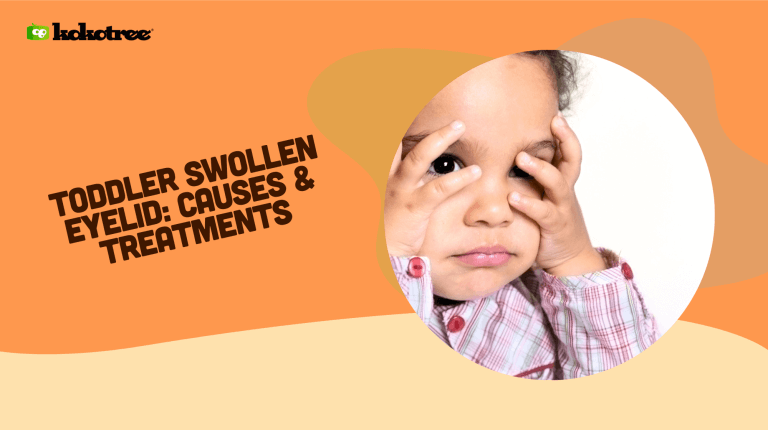

As a parent, noticing a swollen eyelid on your toddler can be both concerning and puzzling. It’s essential to understand the potential causes and how to effectively treat this condition to prevent any complications. In this blog post, we’ll explore common reasons behind a toddler’s swollen eyelid, along with safe and effective treatments to soothe their discomfort.
Causes of swollen eyelids in toddlers include allergies, insect bites, infections, and injuries. Treatments vary based on the cause but often involve proper hygiene, cold compresses, allergy medications, or antibiotic ointments. Consult a pediatrician for a tailored approach to effectively treat and alleviate your toddler’s swollen eyelid.
Before diving into treatments, let’s explore the various factors that can contribute to a toddler’s swollen eyelid. Understanding the root cause will help you select the best treatment option for your toddler’s health.
Now that we’ve covered the common causes, let’s look at various treatments to help alleviate discomfort and prevent complications. It’s crucial to choose the appropriate treatment based on the root cause of the swelling.
Toddlers are always eager to learn and engage with their surroundings. It’s crucial to support their growth and development even while dealing with a swollen eye, ensuring they don’t miss out on valuable opportunities to learn and explore.
Although many instances of a swollen eyelid can be treated at home, some situations require the attention of a medical professional. Contact your pediatrician if:
Trusting your instincts as a parent is crucial to ensure your toddler receives proper medical attention when necessary.
Navigating the world of toddler development can be challenging, especially when faced with issues like swollen eyelids. By identifying the cause and employing the appropriate treatment, you can help your little one feel better and prevent complications.
Find ways to engage their minds and support their development through creative and educational activities. Never hesitate to consult a pediatrician if you’re concerned about your child’s health or if the swelling does not improve.
It’s important to acknowledge that the overall health of a child, including their eye health, plays a vital role in toddler education and learning. Ensuring that your little one’s eyes are healthy is essential for them to engage with their surroundings, socialize, and develop critical cognitive skills.
Besides swollen eyelids, there are other eye conditions that toddlers may encounter. As a parent, it’s vital to be aware of these potential issues and take steps to prevent them when possible.
As a parent, there are proactive measures you can take to ensure that your toddler’s eyes are healthy and fully supported throughout their education:
In conclusion, your child’s eye health plays a pivotal role in their early education and overall well-being. Focusing on prevention and early intervention can make a significant difference in their ability to explore the world around them.
Here’s a compilation of frequently asked questions to help provide a comprehensive understanding of toddler swollen eyelids, their causes, treatments, and related concerns. Use the answers below to guide you in taking care of your little one’s eye health.
While most instances of swollen eyelids in toddlers are not indicative of severe medical conditions, it’s essential to monitor the swelling closely. If the swelling worsens or is accompanied by other symptoms such as intense pain or difficulty breathing, contact your pediatrician immediately.
The healing time for a swollen eyelid depends on its cause and the chosen treatment method. Generally, with proper care, a swollen eyelid can take anywhere from a few days to a week or more to heal.
Using chamomile tea bags or cucumber slices can be soothing for some, but be cautious with toddlers, as their skin is more sensitive. Always consult with your pediatrician before trying any home remedy to ensure it is safe and appropriate for your child.
A child’s first eye exam should ideally take place between 6 months to a year of age, with subsequent checkups recommended at least once every 1-2 years or as advised by your pediatrician.
In most cases, a swollen eyelid will not cause permanent damage to your toddler’s vision. However, if the root cause of the swelling is not addressed promptly, potential complications or long-term issues may arise.
An allergy typically presents as swelling in both eyes, accompanied by itching, watery eyes, and possible sneezing or congestion. On the other hand, infections like conjunctivitis usually affect one eye at first, presenting symptoms like a red or pink hue, discharge, and potentially crustiness.




